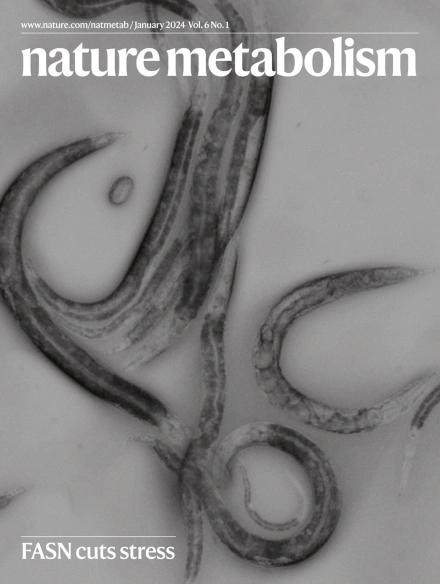LONP1 regulation of mitochondrial protein folding provides insight into beta cell failure in type 2 diabetes
IF 20.8
1区 医学
Q1 ENDOCRINOLOGY & METABOLISM
引用次数: 0
Abstract
Protein misfolding is a contributor to the development of type 2 diabetes (T2D), but the specific role of impaired proteostasis is unclear. Here we show a robust accumulation of misfolded proteins in the mitochondria of human pancreatic islets from patients with T2D and elucidate its impact on β cell viability through the mitochondrial matrix protease LONP1. Quantitative proteomics studies of protein aggregates reveal that islets from donors with T2D have a signature resembling mitochondrial rather than endoplasmic reticulum protein misfolding. Loss of LONP1, a vital component of the mitochondrial proteostatic machinery, with reduced expression in the β cells of donors with T2D, yields mitochondrial protein misfolding and reduced respiratory function, leading to β cell apoptosis and hyperglycaemia. LONP1 gain of function ameliorates mitochondrial protein misfolding and restores human β cell survival after glucolipotoxicity via a protease-independent effect requiring LONP1-mitochondrial HSP70 chaperone activity. Thus, LONP1 promotes β cell survival and prevents hyperglycaemia by facilitating mitochondrial protein folding. These observations provide insights into the nature of proteotoxicity that promotes β cell loss during the pathogenesis of T2D, which could be considered as future therapeutic targets. LONP1, whose expression is downregulated in islets from donors with type 2 diabetes, is vital to mediate efficient mitochondrial protein folding, thus preventing proteotoxicity and promoting islet β cell survival and function.


LONP1对线粒体蛋白折叠的调控为2型糖尿病的β细胞衰竭提供了新的视角
蛋白质错误折叠是2型糖尿病(T2D)发展的一个因素,但蛋白质平衡受损的具体作用尚不清楚。在这里,我们展示了T2D患者胰岛线粒体中错误折叠蛋白的大量积累,并通过线粒体基质蛋白酶LONP1阐明了其对β细胞活力的影响。蛋白质聚集体的定量蛋白质组学研究表明,来自T2D供体的胰岛具有类似线粒体而非内质网蛋白质错误折叠的特征。LONP1是线粒体蛋白抑制机制的重要组成部分,在T2D供者的β细胞中表达减少,导致线粒体蛋白错误折叠和呼吸功能降低,导致β细胞凋亡和高血糖。LONP1功能的获得改善了线粒体蛋白错误折叠,并通过需要LONP1-线粒体HSP70伴侣活性的蛋白酶独立作用恢复糖脂中毒后的人类β细胞存活。因此,LONP1通过促进线粒体蛋白折叠促进β细胞存活并防止高血糖。这些观察结果为了解在T2D发病过程中促进β细胞损失的蛋白质毒性的本质提供了见解,这可能被认为是未来的治疗靶点。
本文章由计算机程序翻译,如有差异,请以英文原文为准。
求助全文
约1分钟内获得全文
求助全文
来源期刊

Nature metabolism
ENDOCRINOLOGY & METABOLISM-
CiteScore
27.50
自引率
2.40%
发文量
170
期刊介绍:
Nature Metabolism is a peer-reviewed scientific journal that covers a broad range of topics in metabolism research. It aims to advance the understanding of metabolic and homeostatic processes at a cellular and physiological level. The journal publishes research from various fields, including fundamental cell biology, basic biomedical and translational research, and integrative physiology. It focuses on how cellular metabolism affects cellular function, the physiology and homeostasis of organs and tissues, and the regulation of organismal energy homeostasis. It also investigates the molecular pathophysiology of metabolic diseases such as diabetes and obesity, as well as their treatment. Nature Metabolism follows the standards of other Nature-branded journals, with a dedicated team of professional editors, rigorous peer-review process, high standards of copy-editing and production, swift publication, and editorial independence. The journal has a high impact factor, has a certain influence in the international area, and is deeply concerned and cited by the majority of scholars.
 求助内容:
求助内容: 应助结果提醒方式:
应助结果提醒方式:


